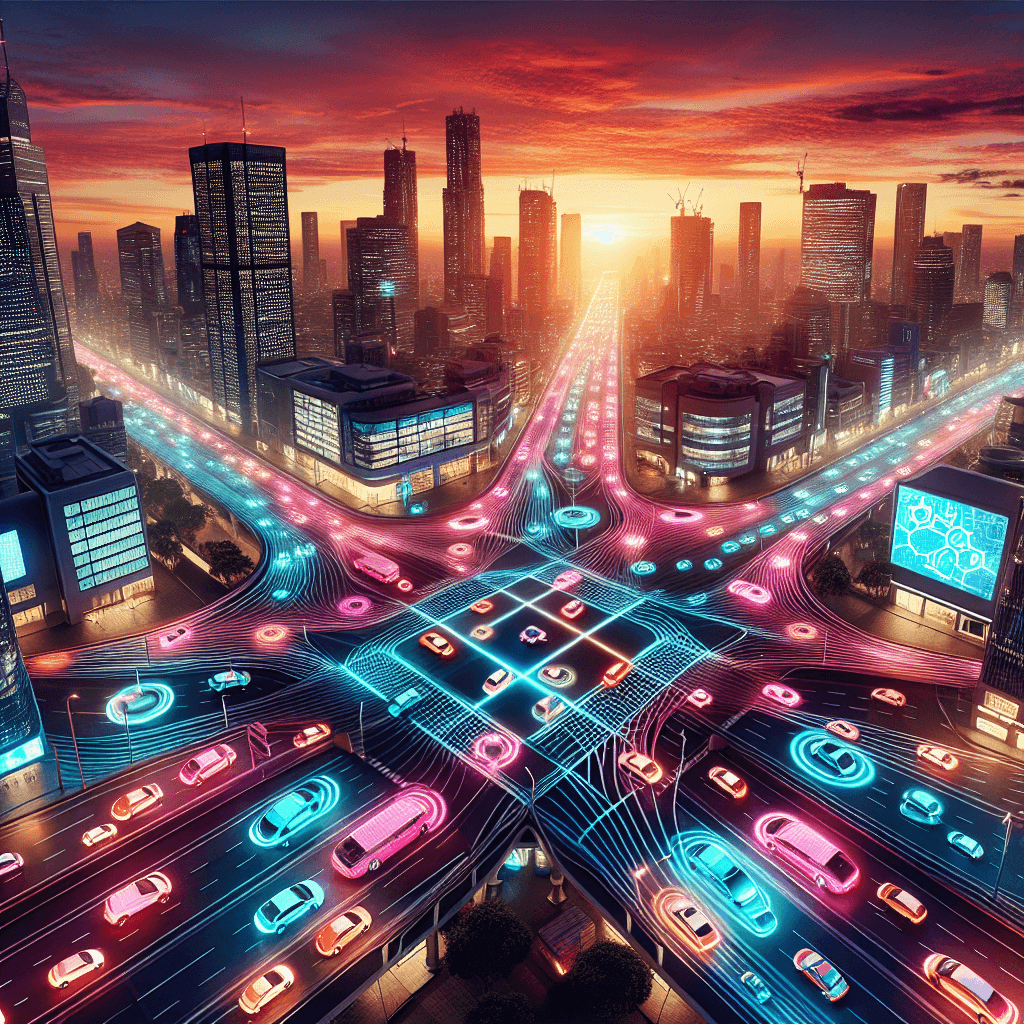Reinforcement Learning Use Cases Explained

Reinforcement Learning Use Cases Explained
Reinforcement learning (RL) is a fascinating branch of machine learning that has been making waves across various industries. It involves an agent learning to make decisions by interacting with its environment, aiming to maximize cumulative rewards over time. This powerful approach drives many cutting-edge innovations from robotics and gaming to personalized recommendations and autonomous vehicles. In this blog post, we’ll delve into the most prominent reinforcement learning applications explained in detail.
Introduction
Reinforcement learning has emerged as a pivotal technology for creating systems that can adaptively make decisions based on their interactions with the environment. This machine learning paradigm is distinct from others like supervised or unsupervised learning because it focuses on decision-making through trial and error, where an agent learns optimal actions by receiving rewards or penalties.
Reinforcement learning is a type of machine learning where an agent learns to make decisions by taking actions in an environment to maximize cumulative reward. Common use cases for reinforcement learning include robotics control, personalized recommendation systems, and game-playing AI. Organizations such as OpenAI, DeepMind, and academic institutions like Stanford University have been at the forefront of RL research, pushing its boundaries in various domains. In this comprehensive guide, we will explore how adaptive decision-making systems with reinforcement learning are transforming industries and enabling versatile applications across diverse fields.
Use Cases for Reinforcement Learning
Robotics Control with Reinforcement Learning
One of the earliest and most impactful applications of reinforcement learning is in robotics control. Robots equipped with RL algorithms can learn to perform complex tasks by interacting with their environment, optimizing their actions to achieve specific goals without explicit programming for each scenario.
- Adaptive Movement: In manufacturing, robots use RL to refine their movements over time, improving efficiency and precision.
- Autonomous Navigation: These intelligent systems navigate autonomously in warehouses or industrial settings, showcasing the potential of adaptive decision-making systems with reinforcement learning.
Reinforcement learning applications in robotics are transforming traditional automation processes, leading to more efficient and flexible manufacturing environments. Institutions like Stanford University are at the cutting edge of this research, developing sophisticated RL algorithms that enhance robotic capabilities beyond what was previously possible. For instance, robots can learn from failures without human intervention, significantly reducing downtime and increasing productivity.
Moreover, reinforcement learning is not limited to industrial settings. In healthcare, robots powered by RL assist in rehabilitation exercises by adapting movements according to the patient’s progress, providing a personalized therapy experience. This adaptability ensures that each session is optimized for maximum therapeutic benefit, demonstrating how reinforcement learning enhances both precision and personalization in robotic applications.
Personalized Recommendation Systems
Another thriving area for reinforcement learning applications is personalized recommendation systems. Platforms use RL to dynamically adjust suggestions based on user behavior, enhancing user experience and engagement.
- Real-time Adaptation: These systems continuously learn from user interactions, refining recommendations to align with evolving preferences.
- Enhanced User Engagement: By providing tailored content or product suggestions, businesses can significantly boost customer satisfaction and retention.
Companies across various industries leverage adaptive decision-making systems with reinforcement learning to refine their recommendation engines. This approach not only improves the accuracy of recommendations but also increases user engagement by presenting options that align closely with individual preferences. For example, streaming services like Netflix utilize RL algorithms to suggest movies or shows, thereby enhancing viewer satisfaction and retention rates.
Additionally, e-commerce platforms implement RL to optimize their product placement strategies, ensuring that customers are presented with items most likely to interest them based on past behavior. This strategic use of reinforcement learning not only enhances the shopping experience but also drives sales by effectively targeting customer needs.
Machine Learning in Autonomous Vehicles
The application of reinforcement learning in autonomous vehicles is one of the most exciting developments in AI use cases across industries today. Autonomous vehicles rely heavily on RL to navigate complex environments safely and efficiently.
- Real-Time Decision-Making: Reinforcement learning enables autonomous vehicles to make split-second decisions, such as when to brake or swerve, by processing vast amounts of data from sensors.
- Continuous Learning: These systems can learn from every journey, improving their performance over time and adapting to new environments without human intervention.
Companies like DeepMind are at the forefront of integrating RL into autonomous vehicle technology. By simulating millions of driving scenarios, these algorithms can predict outcomes and optimize decisions in real-time, significantly reducing the risk of accidents. The continuous learning aspect ensures that vehicles become more proficient with each mile driven, paving the way for safer and more reliable transportation systems.
In urban settings, reinforcement learning helps autonomous vehicles manage traffic patterns and adapt to dynamic road conditions, such as construction zones or unexpected obstacles. This capability is crucial for maintaining smooth traffic flow and minimizing congestion in bustling city environments.
RL Algorithms for Gaming
Reinforcement learning has revolutionized the gaming industry by enabling AI systems to compete at levels previously thought impossible for machines. One of the most notable examples is DeepMind’s AlphaGo, which defeated human champions in the complex board game Go.
- Strategic Depth: RL algorithms can analyze vast amounts of data from countless games, allowing them to develop strategies that surpass human capabilities.
- Adaptability: These systems continuously learn and adapt, refining their techniques based on outcomes and new information.
The impact of reinforcement learning in gaming extends beyond competitive play. Game developers use RL to create more engaging and challenging AI opponents, enhancing the player’s experience by providing a realistic and dynamic challenge. This application not only improves gameplay but also opens up possibilities for personalized gaming experiences tailored to individual skill levels and preferences.
Furthermore, reinforcement learning is used in game testing, where AI agents explore games to identify bugs or glitches that human testers might miss. This approach ensures higher quality releases and more polished final products, benefiting both developers and gamers alike.
Healthcare Applications
Reinforcement learning is making significant strides in healthcare, offering innovative solutions for treatment optimization and personalized medicine.
- Treatment Optimization: RL algorithms can analyze patient data to recommend optimal treatment plans, considering individual health conditions and responses to previous treatments.
- Personalized Medicine: By continuously learning from new medical data, these systems can adapt recommendations to suit each patient’s unique needs, enhancing the efficacy of treatments.
One notable application is in managing chronic diseases like diabetes. Reinforcement learning algorithms analyze blood sugar levels and other relevant data to suggest insulin dosages tailored to individual patients. This personalized approach helps maintain optimal glucose levels, reducing complications and improving quality of life for diabetic patients.
In addition to treatment optimization, RL is used in robotic surgery, where robots equipped with these algorithms assist surgeons by adapting their movements based on real-time feedback. This collaboration enhances precision and safety during complex procedures, showcasing the potential of reinforcement learning to transform healthcare delivery.
Financial Sector Innovations
The financial sector has also embraced reinforcement learning for its ability to analyze vast datasets and make informed decisions quickly.
- Portfolio Management: RL algorithms can optimize investment portfolios by continuously adjusting asset allocations based on market conditions.
- Fraud Detection: These systems learn from transaction data to identify patterns indicative of fraudulent activity, improving security measures in real-time.
In portfolio management, reinforcement learning helps investors maximize returns while minimizing risks. By analyzing historical and current market trends, RL algorithms can suggest investment strategies that align with an individual’s risk tolerance and financial goals.
For fraud detection, reinforcement learning enhances the ability to recognize suspicious activities by learning from past transactions. This capability allows banks and financial institutions to proactively prevent fraudulent actions, protecting both themselves and their customers from potential losses.
Challenges and Future Directions
Implementing reinforcement learning comes with its own set of challenges. One of the primary hurdles is the need for large amounts of data and computational resources. Designing appropriate reward functions is crucial but often complex, as it requires careful consideration to ensure that the agent learns desired behaviors without unintended consequences.
Despite these challenges, the future of reinforcement learning looks promising. As technology advances, we can expect RL algorithms to become more efficient and capable of tackling even more complex problems. The ongoing research by organizations like OpenAI and DeepMind is paving the way for new applications across various sectors, from environmental management to space exploration.
Conclusion
Reinforcement learning stands at the forefront of AI innovation, driving transformative changes across multiple industries. From robotics and autonomous vehicles to gaming, healthcare, and finance, RL algorithms are enhancing efficiency, safety, and personalization in ways previously unimaginable. As we continue to explore its potential, reinforcement learning will undoubtedly play a pivotal role in shaping the future of technology.
